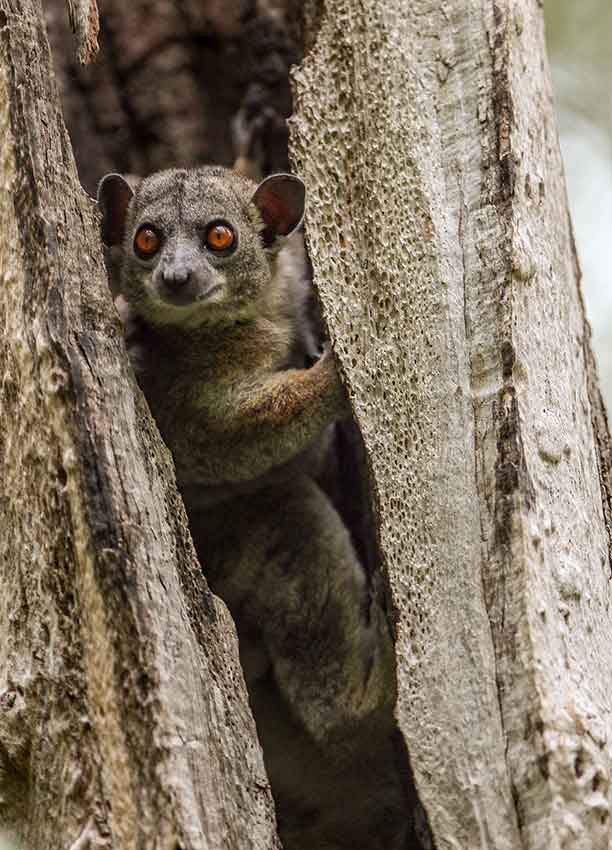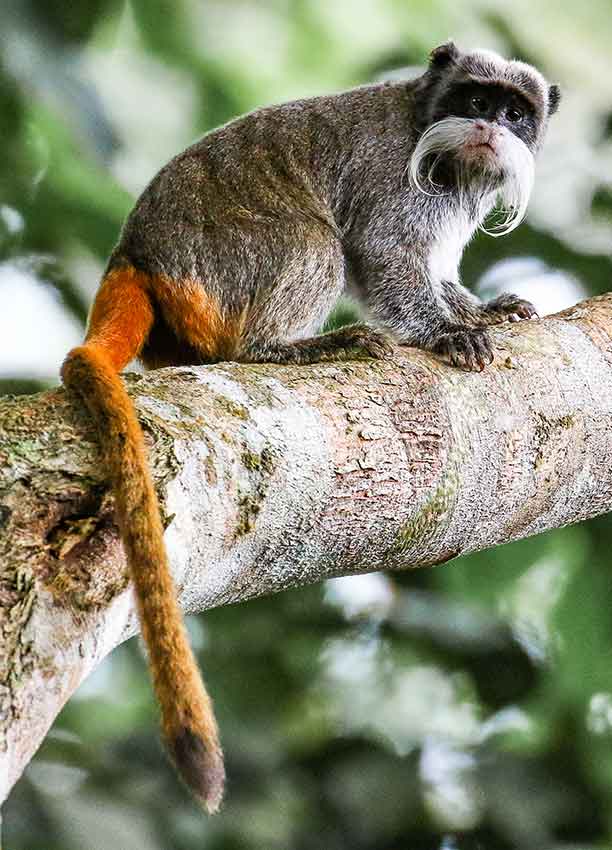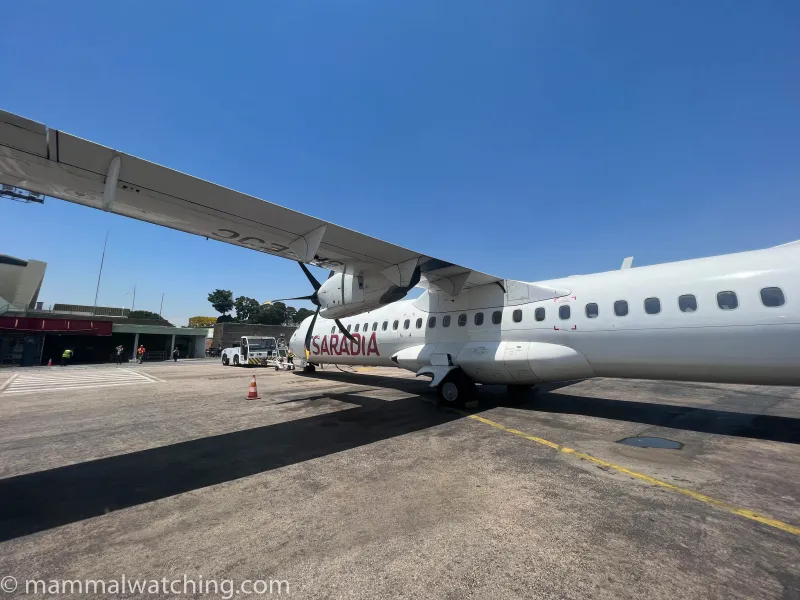How to offset your greenhouse emissions
Travel produces greenhouse gases. The good news is that there are ways to quickly and simply offset the emissions from a trip and help mammals in the process.
Many mammalwatchers travel a lot, flying large distances and creating a sizeable carbon footprint. While travelling less or using less polluting forms of transport would be optimal, mammalwatchers should regardless be looking for ways of reducing their impact on their environment.
Carbon offsetting is one way to reduce that impact. The principle is simple: carbon dioxide has the same impact on the climate no matter where and how it is emitted and so if a tonne of carbon dioxide can be absorbed from the atmosphere in one part of the world it should cancel out a tonne of the gas released somewhere else. Trees, of course, absorb carbon dioxide from the air as they grow, and so forests are important biggest carbon sinks. So, in theory, individuals can cancel out the impact of their emissions by investing in projects that preserve forests or plant trees, thereby reducing atmospheric CO2.The REDD+ (Reducing Emissions from Deforestation and Degradation) scheme aims to provide communities or governments that own forests with an alternative to logging, by allowing them to raise funds by keeping forests intact. The scheme sets out a system of rules to calculate the value of carbon in the trees and how carbon credits can be issued if the area is not deforested.
We encourage all mammalwatchers taking a trip to consider offsetting their carbon. There are two steps to this process, both of which – in theory – are simple. First, calculate how many tonnes of CO2 your trip generated and the dollar value to offset that amount of carbon. Second, buy the dollar equivalent amount of carbon credits (in tonnes of CO2) to offset those emissions from a reputable carbon conservation project.
Simple in theory. But in practice there are numerous different emissions calculators that pump out wildly different figures for any one flight. They also have different systems of calculating how much you should pay to offset those emissions. And then there are a lot of projects that you can donate to, ranging from tree planting, to building wind turbines, to capturing methane.
Here we aim to guide you in how to calculate the offset for a trip and suggest where to support when you purchase your offsets.
Calculating your emissions
There are many different sites which can help you calculate the emissions from your flight that vary in ease of use and in the amount of information they will capture. Atmosfair, which is based in Denmark, allows you to plug in many different variables about your flight including the type of seat and which plane you are flying on to get a good idea of just how much carbon you will be producing. It also has a reputation for accuracy.
https://www.atmosfair.de/en/offset/flight/
The cost of offsetting a plane ticket might be less than you think, even if the amount of CO2 you generated might be higher. For instance, in January 2023 if you flew New York to London return, in economy class, you generated about 2.7 tonnes of carbon dioxide. This is more than five times what the average Ethiopian generates in an entire year! But you can offset this for just 63 euros.
If you happen to be flying to East Africa from the US or Europe, you can use a cheat-sheet produced by one of the organisations that mammalwatching supports in Tanzania to give a rough estimate of how many tonnes of CO2 one person will produce and the offset dollar amount.
Europe to East Africa 2.5 tonnes @ US$15 = US$38
South Africa to East Africa 1 tonne @ US$15 = US$15
East USA to East Africa 3 tonnes @ US$15 = US$45
West USA to East Africa 3.5 tonnes @ US$15 = US$53
This is still far from an exact science and opinions vary on how much we really ought to be contributing to oiffset a flight. So if you can afford it please consider buying extra credits each time you travel.
Does this all sound too complicated?
Please don’t let uncertainty over your precise emissions get in the way of offsetting at least some of the damage your plane ride caused. If this all sounds too complicated that why not, for instance, simply donate 5-10% of the cost of your plane ticket to a carbon offset scheme. That might absorb a little more or a little less carbon than you produced, but it has to be better than doing nothing. And not only are you helping the planet’s climate, you will be helping whole ecosystems to survive.
Buying Carbon Credits
So now you’ve calculated how much money you should donate to offset your carbon, what projects should you support? There are lots of choices. And some initiatives are more effective (and reputable) than others.
Here are a handful of projects that members of the mammalwatching community endorse for the work they are doing. They mostly involve protecting important wildlife habitat in areas with interesting mammal species.`
Gola Rainforest in Sierra Leone: helping protect Pygmy Hippos, Chimps and Jentink’s Duikers. www.standfortrees.org/protect-a-forest/gola/
Carbon Tanzania: protecting wildlife dispersal areas in northern Tanzania including the Makame Wildlife Management Area and the Yaeda Valley. www.carbontanzania.com/buy-carbon-offsets/
Also See
Andrew Balmford’s post from 2017: Offset your emissions from mammalwatching by saving Pygmy Hippos.
Jon Hall’s post from 2017: I just offset (some of my) greenhouse emissions.
See also
Madagascar
The enormously rich diversity of primates makes Madagascar one of the planet’s four major primate regions.

Central & South America
Central and South America – or the Neotropics – are home to well over 200 species and subspecies of primates.



